
How to Make Volunteer Newsletters More Interesting
During our weekly coaching call last Friday, I received a few questions about starting and maintaining volunteer email newsletters that are interesting to read. So, this week’s blog focuses on how to put together an engaging and sustainable email newsletter that volunteers can’t wait to open up and dig into.
4 Steps to Making More Interesting Volunteer Newsletters
Let’s get down to brass tacks, right off the bat.
Your volunteer newsletter can’t be fluff. It’s not simply something you check off your to-do list.
It is a relationship development tool.
It takes significant time and effort to put out a regular newsletter. If it’s filled with uninteresting stories or unimportant information, then no one is going to read it.
So, how do we make an interesting volunteer newsletter that gets open and read and becomes a real workhorse for you?
Better, more interesting newsletters are really a product of the following four things:
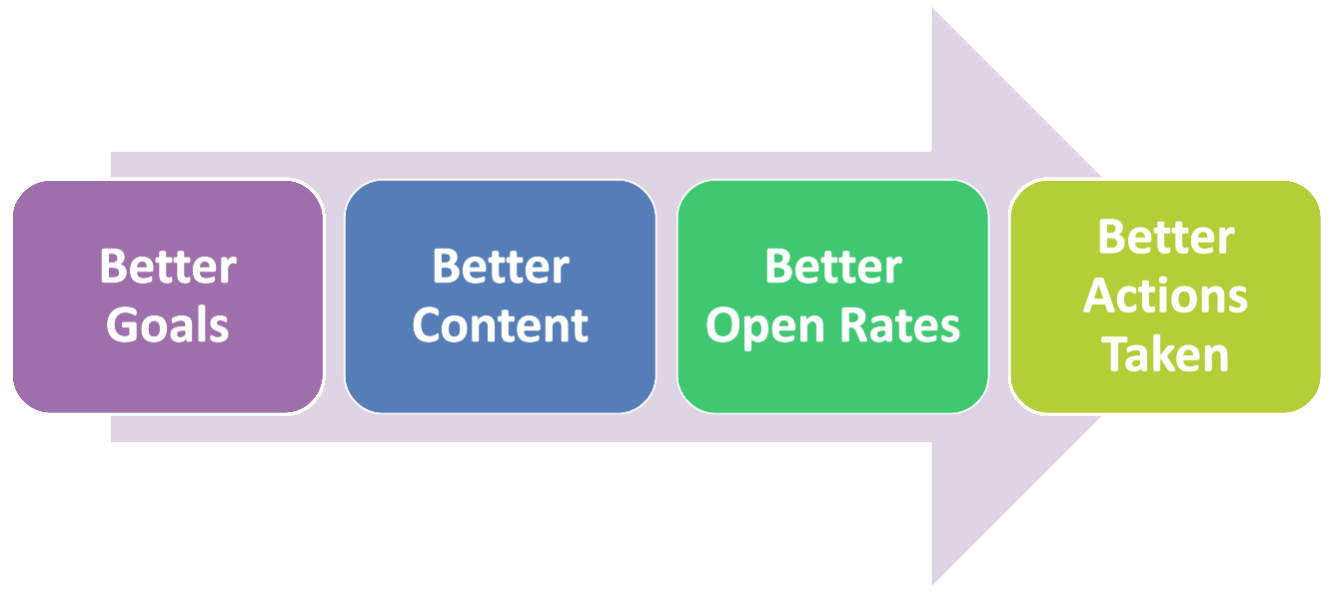 Better Goals
Better Goals
To start with, a better email newsletter has better goals from the beginning. You need to understand why the newsletter exists on its own. There are a variety of different ways you can communicate with your volunteers. It doesn’t have to be a newsletter.
So, why choose this channel, above all others?
If your primary goal is to re-engage volunteers, think strategically about the content you’re including that can begin to build inspiration and anticipation, even a little, maybe FOMO (or fear of missing out) to start to bring people back into the fold. Particularly if you’ve had volunteers who haven’t been very active with you.
Better Content
Volunteer newsletters are better if you have better content, in other words, material that is widely interesting, rich, and has actionable information. That said, your email newsletter needs to also be short and easy to skim.
When folks expect your newsletter will be particularly long, they will put off reading it. What’s more, they’ll and more than likely never come back to it.
So, the key goal of better content in a bite-sized format. You can always tease deeper, longer content, and then link to the full version from your email.
Your newsletter should be three to five short, compelling sections. It’s a great idea to continually share stories and wins, both small and large. Infusing the voice of your volunteers into your newsletter helps others experience what it’s like to be a volunteer.
Better Open Rates
Better volunteer newsletters are also better when they have higher open rates. If you have a message to share with your audience, they need to open it! The higher the open rates you have, the more people are reading your messages.
If no one is opening your emails, then there’s a reason. Either the subject line isn’t compelling, the content isn’t helpful, or your email is going to people’s spam folder.
Look at your numbers and start to figure out how you can improve. Start with your email subject line. Try Co-schedule’s email subject line tester to test different versions and choose the best one. You’ll learn a lot from the process.
Better Actions Taken
Your newsletters should always have some kind of call-to-action. The reason your click-through rates are so important is that more people are then taking the actions you need them to take!
That action could be to “learn more,” or “click on this link.” But a stronger call-to-action might be “sign up for a shift,” “read this training,” or “watch this video training.”
Get creative with your calls to action – “Heck Yeah! I’m In!” is much more fun than “Register Here.” Don’t you agree?
In every newsletter, there should always be some type of action that you’re asking your audience to take. So, think it through and include it.
5 Simple Volunteer Email Campaigns to Engage Your Community
A lot goes into writing a newsletter volunteers can’t wait to read: determining the best layout, crafting subject lines that increase opens, producing detailed editorial calendars, managing the process efficiently, etc.
Read on for our curated list of resources that will provide you with tips and tools to manage volunteer newsletters, from draft to ready to send.
The Case for Email-Based Volunteer Newsletters
It is now 2020. You have so many options when it comes to communicating with your volunteers, whether it’s social media, newsletters, emails, an online community, mailing paper letters, etc.
One reason I am a huge fan of digital newsletters is above everything else, is that I really believe that your email list is your biggest asset.
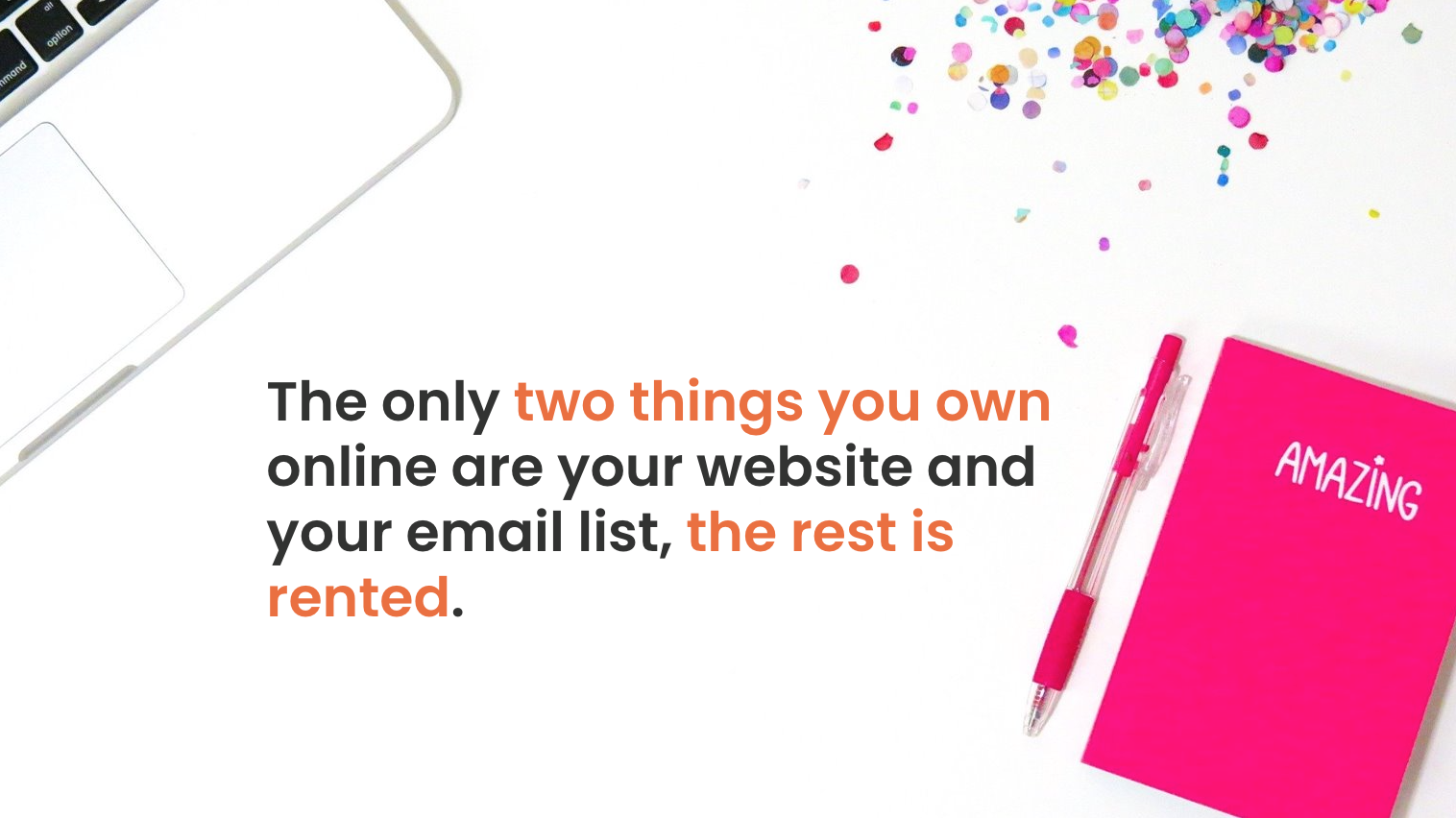
If you think that social media posts are going to have more impact than your email-based newsletter, look the data. Data doesn’t lie. See how many people are actually interacting with your social media posts. And then look at how many people are opening your newsletter.
You own your email list. Whoever has opted into your list has given you permission to send them emails. and they are warm to receiving messages from you.
Almost everyone checks their email daily. I have plenty of social media accounts, personally. I don’t check them daily. I miss most of what’s going on through various platform newsfeeds. Out of sight, out of mind! But with email, communications arrive directly in your email inbox, and more than likely you’re going to see it.
Do all emails get opened? No. But emails are opened more than other digital communications.
Your email is your biggest asset. ‘Nuff said!
Newsletter Options
If you haven’t yet sent a newsletter to your volunteers, or developed any content that’s focused on volunteers, then you have a few different options when it comes to targeting your newsletter.
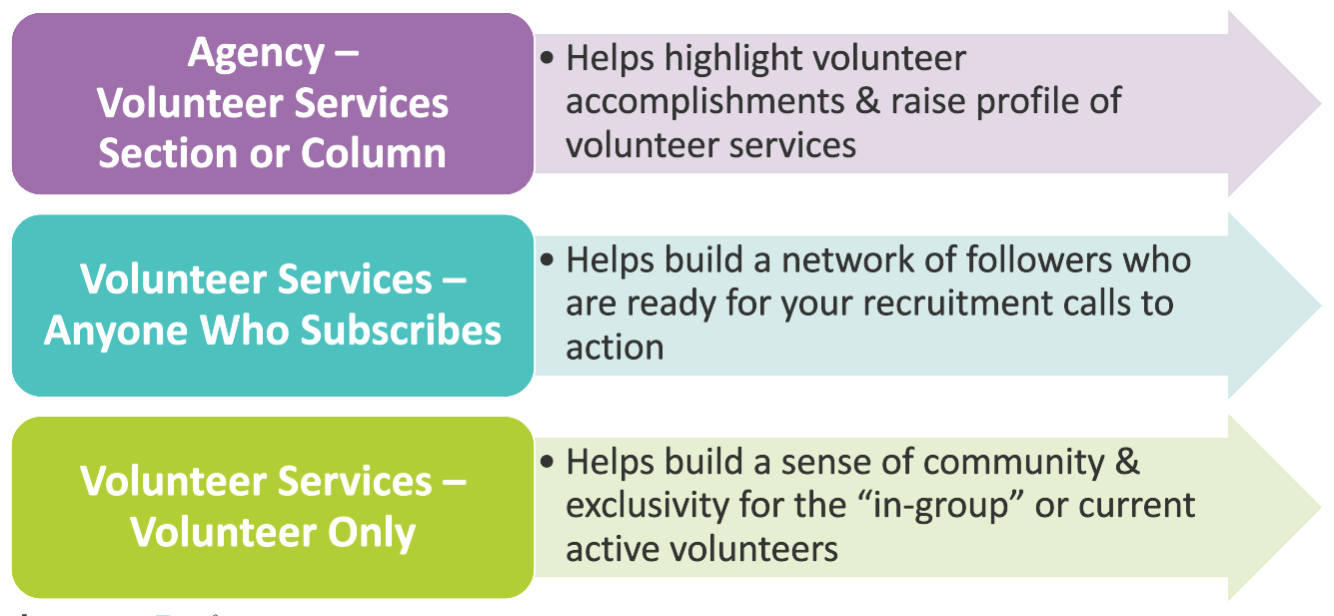
Agency Newsletter – Including a Volunteer Services Section or Column
First of all, you could include just a volunteer section in your regular agency newsletter. The advantage is ui are likely to reach more people and you can reach non-volunteers with messaging about your volunteer opportunities.
You can start to cultivate interest by sharing volunteer success stories and accomplishments. You can raise the profile of volunteering in your organization. In fact, it’s a good idea to feature something about volunteers in every single edition of your regular agency newsletter.
Volunteer Services – Anyone Who Subscribes
Alternatively, you could do a volunteer services department newsletter that gets sent to anybody who subscribes.
This will help you reach more people with your recruitment calls-to-action. It could also potentially help you create a community of people who are interested in your upcoming volunteer opportunities.
The downside is that if you are communicating to non-volunteers, you need to be careful to explain all the “insider speak” that your group already knows and understands, or you risk alienating potential supporters.
Volunteer Only
Much of the details of regular volunteer activities are probably going to be confusing for people who are not active volunteers. This means half of your content will feel irrelevant to half of your audience. Some may even stop opening your emails because it just doesn’t speak to them.
That’s when it makes sense to set up a newsletter that is specifically for active volunteers. The more targeted your communication is towards a specific group, the more effective it will be.
Plus, there’s nothing like getting something exclusive in your inbox. It means that you’re part of the tribe.
Always Conversion Focused
Regardless of the content, you’re creating and the audience to which you’re sending it, your primary goal should always be conversion focused. This is because you just don’t have a lot of extra time and energy to spend completing tasks that are not getting traction for you.
Conversion is the rate at which your subscribers and followers take action.
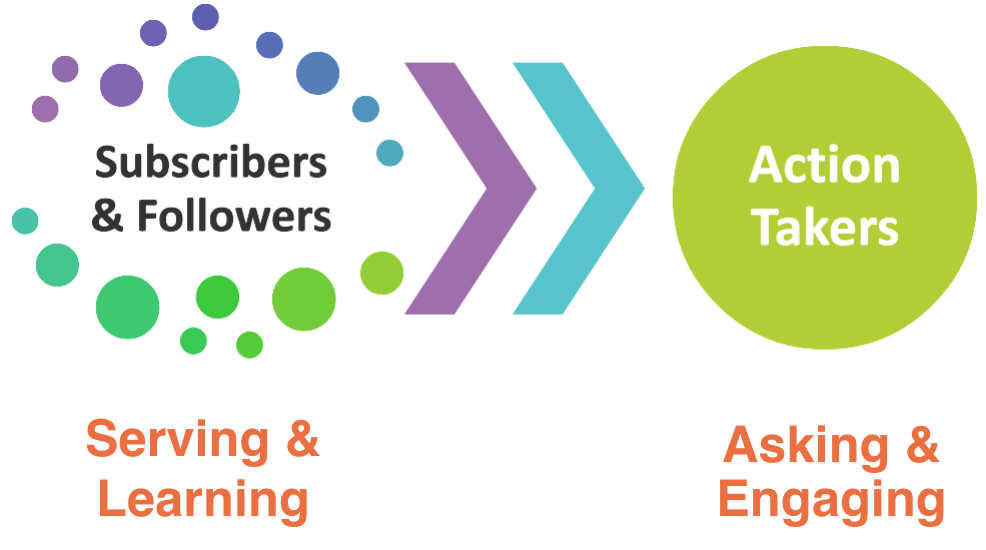
You are performing a service to your readers and they’re learning from you. In return, they will be more open to more engagement with you. When your audience does something you ask of them, whatever it may be, it is a good measurement of the success of your content.
Your ask could be to continue to volunteer with you, to continue to support your organization, or even to log their volunteer hours. It may just be because you’re sharing stories. But you should always be leading readers to the next step in engaging with you.
Email Benchmarks
On average, according to MailChimp, the email open rate for nonprofits is about 25%. Chances are, only one out of every four emails that you send gets opened.

Another factor to consider is your click-thru rate (CTR). If you have a call-to-action, a typical CTR is just about 3% on average. So only three out of a hundred people who opened your email will actually click on something in your email.
That may not seem like much, but I can tell you that on social media, it’s even worse. Social media click-through rates are below this. Email is still your best bet, but you’re going to have to continue to optimize. You’re also going to have to continue to repeat yourself in some of your newsletters (all the more reason that they should be short and sent weekly).
As an example, here’s our VolunteerPro newsletter. We send a member newsletter every Monday and a newsletter to subscribers on Wednesdays. Here is are some “ProNews” newsletters we sent on April 29th and then on May 20th.
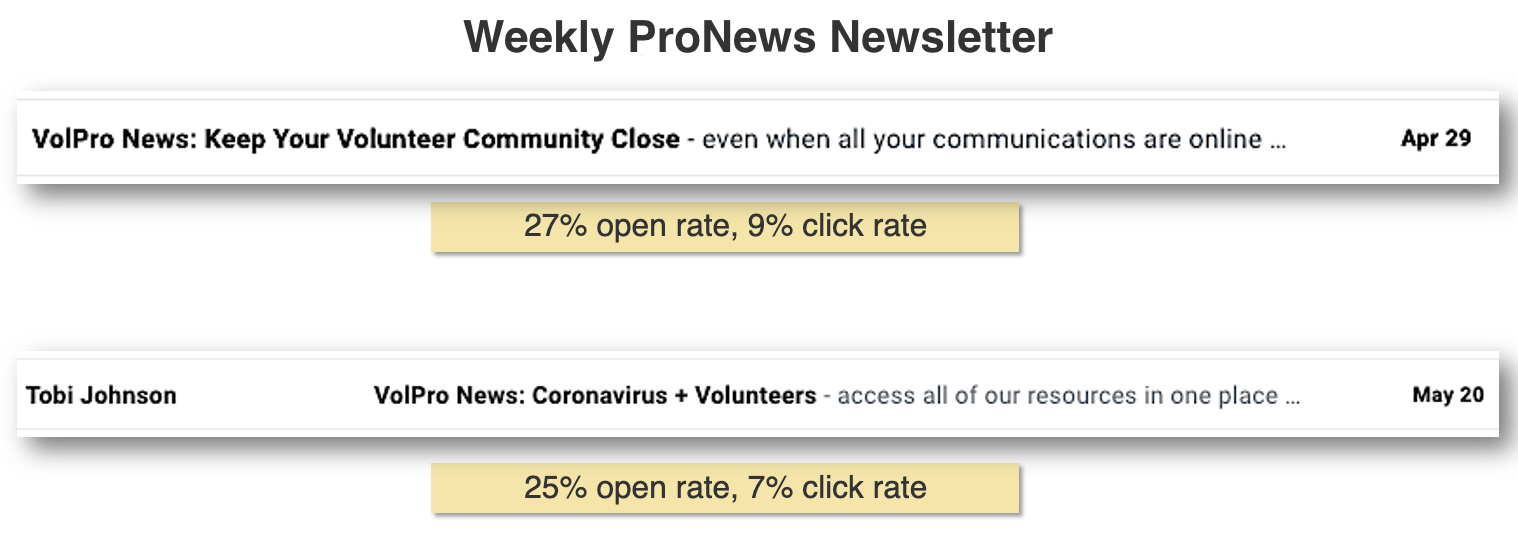
So, we do pretty well in our space for open rates and click rates.
Get Our Newsletter!
To get our open rates and click through rates up, we make sure that we include a really short title. If you’re not signed up for that newsletter, you can go to volpro.net, at the top of our homepage for fresh tips for volunteer coordinators!
And at the top of the page, you just put your, your name and your email and click on it and we sign you up and then we send you some goodies too (a free eBook – Holla!) over the next few weeks. So, if you’re not getting our newsletter, it’s a good thing to get because you’ll get great takeaways and reminders about our upcoming events and offerings.
How to Make Volunteer Newsletters Interesting With Focused Copywriting
Once you start sending your volunteer email newsletter on a regular basis, you need to continue to ensure you are sharing higher-value content that is interesting to your audience (not necessarily you).
The more helpful, the more your content can make the lives of the people reading it better. And sometimes “helpful” means the content is entertaining and it made their day.
Helpful content can also be more utilitarian by making them, and their lives better because it may decrease confusion for example, and increase the opportunity to make a difference, which again is a feel-good for volunteers.
I have found the best way to think about your copy is to really think about these five questions.

Promise – What’s the one big benefit to reading your newsletter?
This is also important to think about because it will help you craft the best subject line.
Your subject line is a promise to your reader. The more the promise in the subject line matches what you deliver on the inside, the more likely people will continue to open your emails. When it’s wildly different, you start to lose readers’ confidence and trust.
Mood – How do we want our readers to feel?
Mood influences not only our copywriting but the images we use. What do we want people to feel? Sometimes it’s not always happy. Sometimes there’s something serious we want to share. But we always want to end on a high note.
Usually, your mood should be uplifting and inspired, focused, motivational, or caring.
Content- What do you want people to know?
Try to figure this out ahead of time before you start writing. I
To write more quickly, create specific bullet points then fill in body text. This also helps you stay on point.t. Keep it really short and really tight.
Call to Action – What do you want people to do?
Every newsletter should ask readers to take some sort of action.
What do you want people to do? Do, what do you want them to reflect on? What actions do you want them to take? Where do you want them to go to read more or learn more?
Do you want them to sign up for a shift? Do you want them to make sure they log their hours in your database? Do you want them to come to an info session? Do you want them to read a blog post you just wrote? Do you want them to give you a review? Do you want them to RSVP for tons of different things that you may be asking people to do? Or to take a single step?
Include no more than two in a single newsletter. It’s even better to just have one.
Sharing – Where and how should readers share?
If you want your readers to share the information in your newsletter with other people, make sure you’re very specific about how and where and with whom in your newsletter.
Give people specific instructions on how to share and give them shout outs when they do.
By answering these five questions, you will get a much higher value of content in your newsletter.
How to Make Volunteer Newsletters Interesting: Quick Tips
We’ve learned a few tips over the years on how to improve our newsletters. In the end, they are now more often opened, all without overwhelming ourselves or our readers.
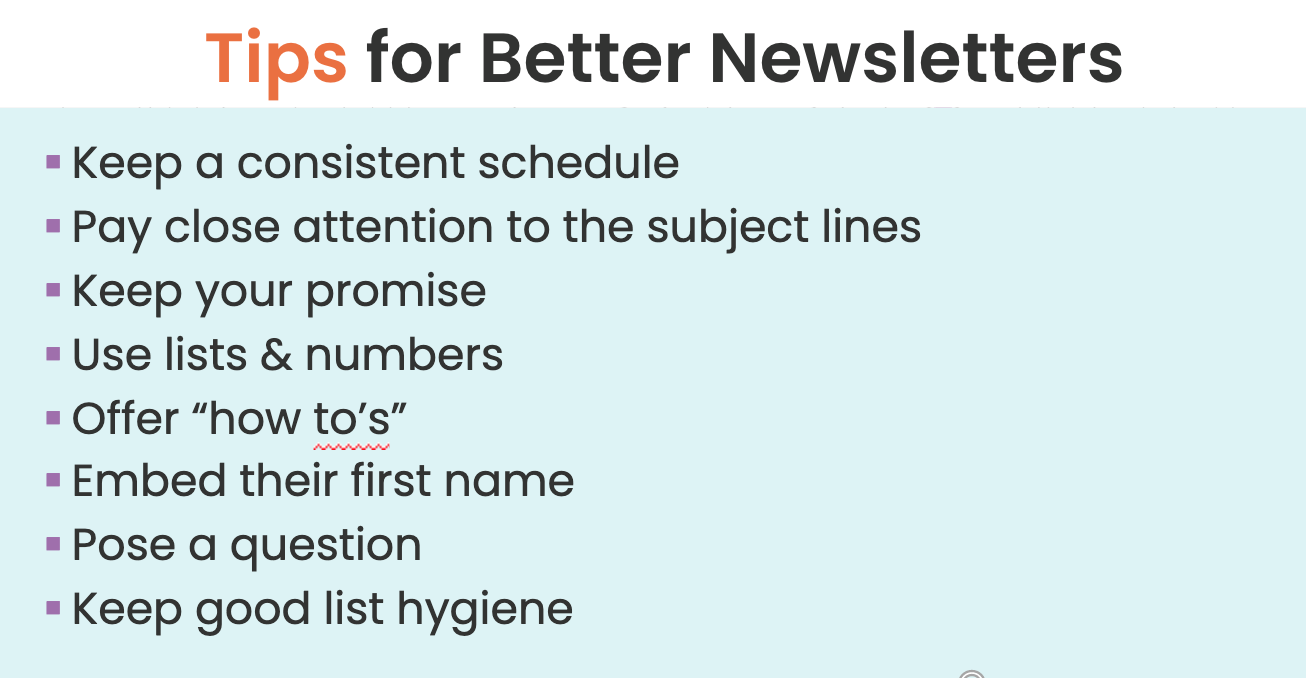
Keep a Consistent Schedule
Pick a day of the week or a day of the month or a day of the quarter… pick a day and keep to that schedule!
We send our member updates on Monday mornings, our regular VolunteerPro newsletters on Wednesdays. They’re in the morning, usually before 10:00 AM, but we don’t always send them at exactly the same time. And that’s okay.
If you want to, you can start to look at your data and see when you have the best opens and send it at that specific time.
Pay Close Attention to Your Subject Lines
Subject lines are where you should spend 80% of your time.
Your goal is to get your newsletter opened and read. If there’s nothing compelling about your subject line, that’s not going to happen. I see this mistake made over and over again. It’s the number one mistake folks make when it comes to email newsletters.
Subject lines how you can easily make your volunteer newsletters more interesting right away!
Keep your Promise
Once you craft that perfect title and your email gets opened, the content needs to match what the email subject line promised it would be. If you are not doing this, then over time your emails are just not going to get opened.
Include Lists, Numbers, & “How-To’s”
Some other tips for getting higher open rates is to use list numbers like “The Five Biggest Mistakes Volunteers Make.” Or you can write a “how-to.” “How to Get the Most from Your Orientation Training.”
This makes your content easy to be consumed and absorbed by your readers
Embed The Recipient’s First Name
Personalization at the start of your email is very helpful to grab the attention of your readers. You can also include their name in the subject line to help increase your open rates.
Pose a Question
Often you can pose a question to your readers. Questions in subject lines often get read.
Examples of this are, “What was your favorite part of our event?” “Take our survey?” or “Have you seen this?”
Posing questions gets a good number of responses.
Keep Good Email Contact List Hygiene
Your contact list usually grows over time. However, you want to keep that list as up-to-date as possible with current email addresses and active readers.
Good list hygiene means making sure you don’t have people on the list after their addresses bounce or they stop opening your emails. You want to take these contacts off your email list because that will mess with your email authority and your emails will start going to spam folders.
Next Steps
Creating interesting volunteer newsletters may seem like a lot of work, but it isn’t too difficult.
Once you have it figured out, you’ll find it only takes about an hour a week to produce.
Implement some of these changes little by little and remember to measure your progress. Keep what works and adjust what doesn’t.
There’s only one way to learn, and that’s by diving feet first and trying!
You can do this!
Ready for a More Resilient 2021? Get Tips to Survive and Thrive with Our Free Guide
Looking for a pick-me-up to get you through tough times? Download our Free Guide and read about how talented volunteer leadership professionals overcome challenges, stay motivated, stay positive, and have fun, even when faced with a crisis.
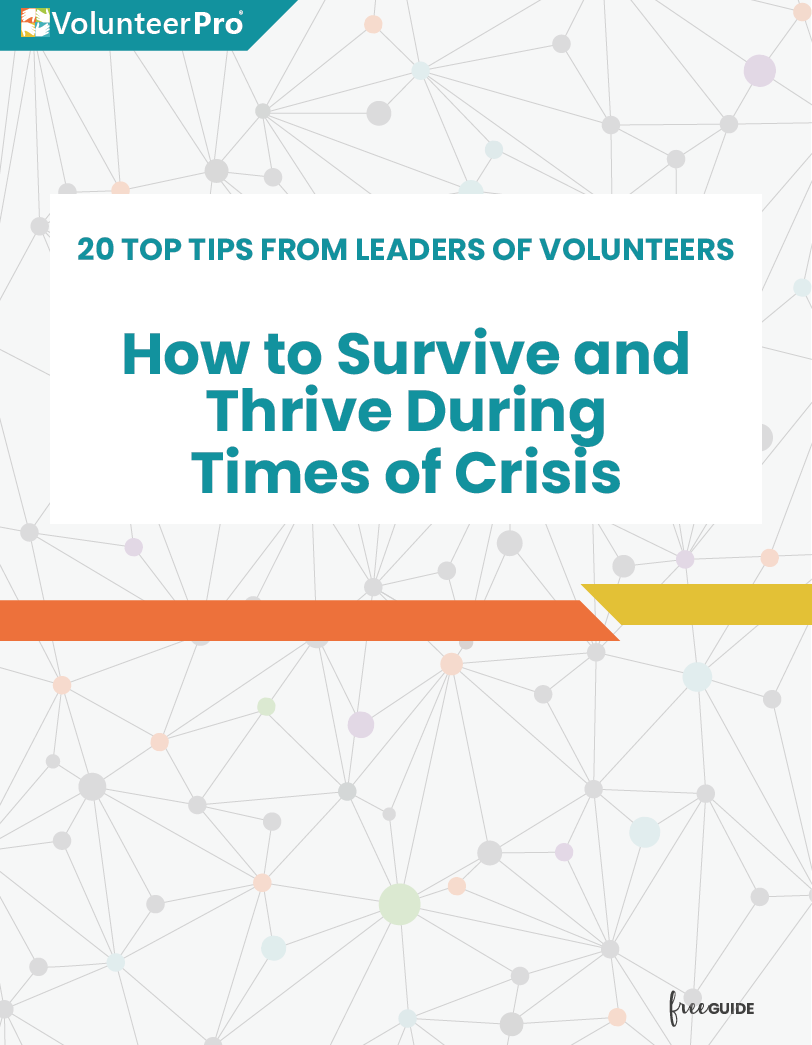
You will leave with 20 tips that will keep you inspired and energized, giving you the ability to lift your community with you as you focus on what you are here to do: build a thriving support system for your nonprofit!
[FREE GUIDE] 20 Top Tips from Leaders of Volunteers: How to Survive and Thrive During Times of Crisis
26 pages of inspiration from leaders who walk the talk.
Learn what your peers have to say about the following four themes:
- Overcoming Challenges: You can do Hard Things
- Mindfulness: Good Vibes Only
- Stay Motivated & Do Good Work
- Be Yourself: Have Fun and Make a Difference



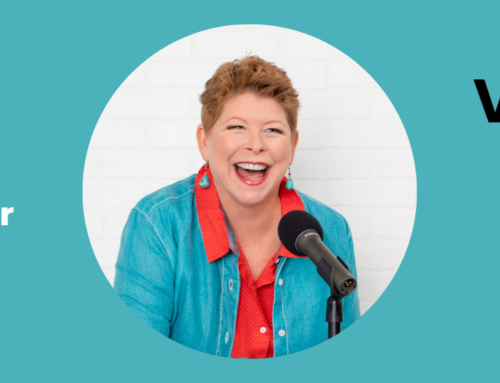



Leave A Comment